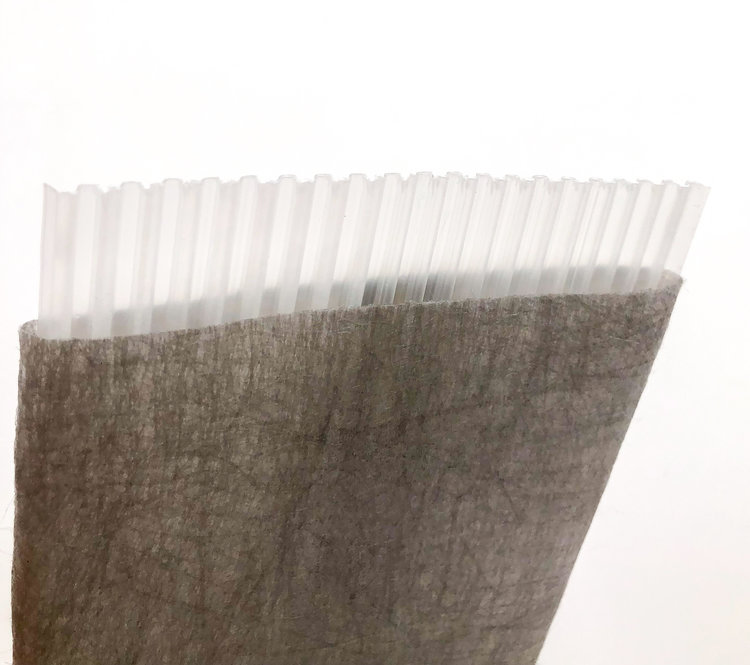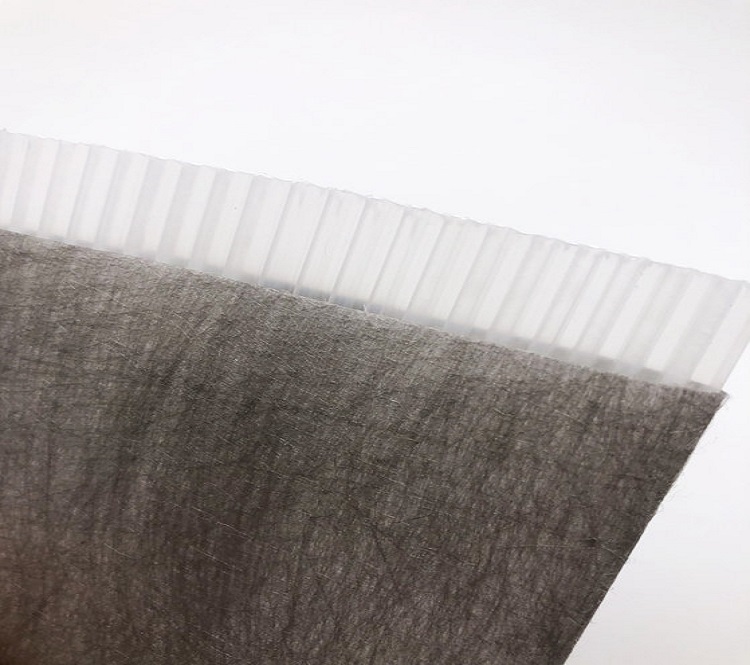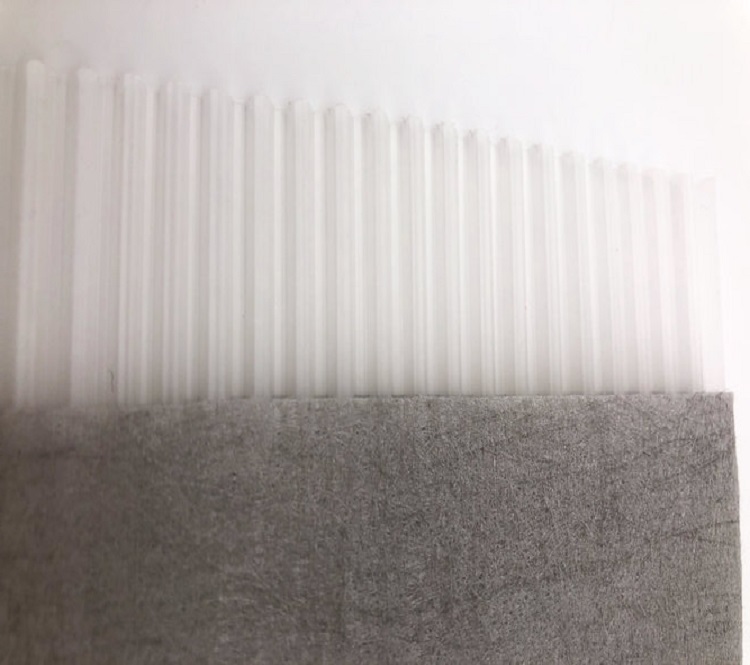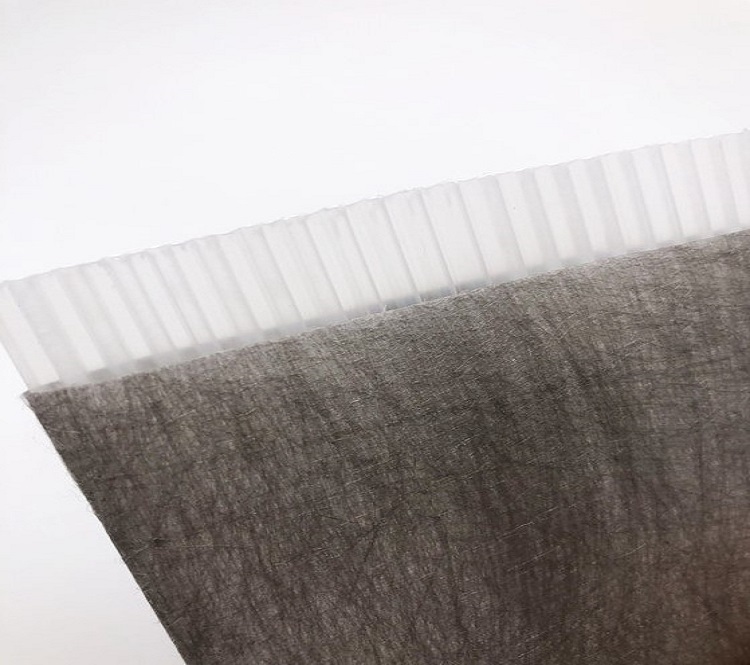Prefabricated Vertical Drains (PVD)/ Wick Drains
This technique involves the installation of artificial drainage paths or vertical drains into soft compressible soils. BJ Geotextile has specially designed the technic of wick drains/ vertical drains in Bangladesh for high settlements.
Low permeable soil integrity is not suitable for heavy-load construction especially in structures like roads, bridges, ports, highways, railroads. For that, stabilizing saturated soil with the process of soft foundation using PVD is a commonly used technique. Prefabricated Vertical Drains (PVD)/ Wick drains conducts the water flow and helps the soil consolidation process.
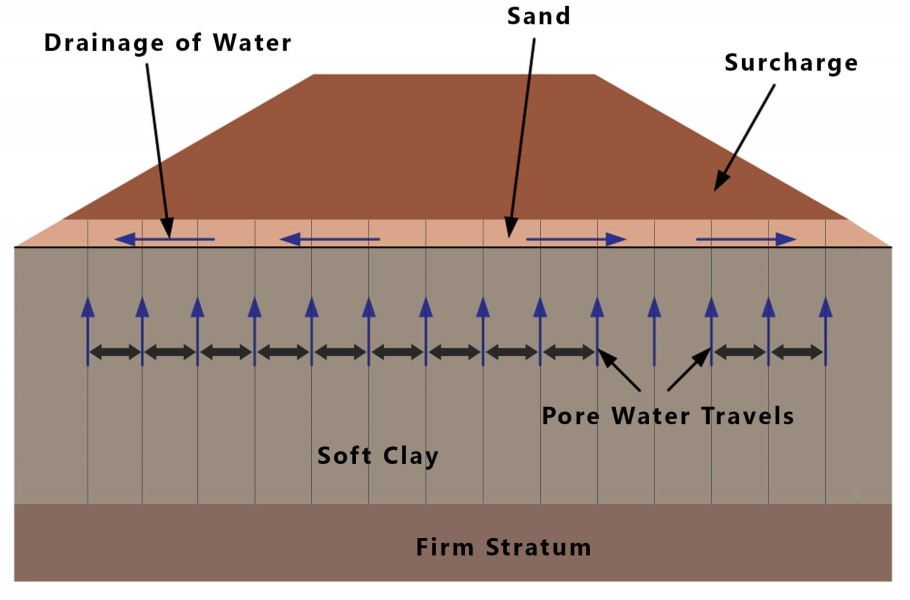
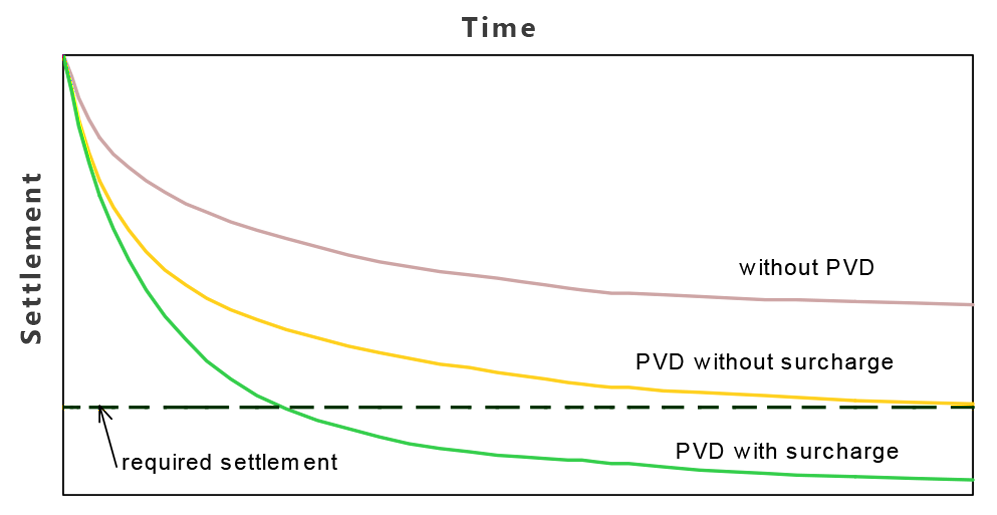
Time settlement curve of soft clay showing significant time reduction achieved by applying PVD with surcharge loading.
PREFABRICATED VERTICAL DRAINs (Pvd)
Prefabricated Vertical Drains (PVDs), also known as wick drains, are made up of two-piece composite fabric comprising of an internal polymer center and an external nonwoven filter jacket. The external filter jacket has a very high water permeability and excellent filtration properties.
The inward center is made up of polypropylene fabric by nonstop extrusion technology and the extruded layered or fin-shaped profiles on both sides of the center give different channels for expansive water-powered stream within the longitudinal heading of the center indeed when distorted under significant pressures, vertical settlements or horizontal relocations.
Product specification
Function
- Speed up the primary consolidation process
- Reducing the surcharge load needed to get the same results with consolidation for a certain period of times
- Speed up the addition of soil shear strength due to soft soil consolidation.
APPLICATION
Vertical drains/ Wick drains technology has proven itself to be the best in hundreds of projects in the last thirty years. Over 1 billion linear metres of similar PVD have been installed worldwide to date for:
- Land reclamation projects.
- Construction of highways, railways, airfields and dykes.
- Ports and harbor construction.
- Development of industrial sites.
- Mitigation of liquefaction.
- Flood protection
PREFABRICATED VERTICAL DRAINs
Prefabricated Vertical Drains (PVDs), also known as wick drains, are made up of two-piece composite fabric comprising of an internal polymer center and an external nonwoven filter jacket. The external filter jacket has a very high water permeability and excellent filtration properties.
The inward center is made up of polypropylene fabric by nonstop extrusion technology and the extruded layered or fin-shaped profiles on both sides of the center give different channels for expansive water-powered stream within the longitudinal heading of the center indeed when distorted under significant pressures, vertical settlements or horizontal relocations.
Product specification
FUNCTION
- Speed up the primary consolidation process
- Reducing the surcharge load needed to get the same results with consolidation for a certain period of times
- Speed up the addition of soil shear strength due to soft soil consolidation.
APPLICATION
PVD technology has proven itself to be the best in hundreds of projects in the last thirty years. Over 1 billion linear metres of similar PVD have been installed worldwide to date for:
- Land reclamation projects.
- Construction of highways, railways, airfields and dykes.
- Ports and harbor construction.
- Development of industrial sites.
- Mitigation of liquefaction.
- Flood protection
vertical drains (Pvd) in Bangladesh product Details
BJ Geotextile® PVD, also called wick drain, is a pocket-style vertical drains (PVD) in Bangladesh for the improvement of soft ground made from a mechanically strong PP core and a nonwoven filter jacket specialized for PVD application. The product quality of our wick Drains/ vertical drains is assured by many certificates including ISO9001, CE, Q-mark, R-mark, Eco-Label, etc.
vertical drains/ wick drains Installation Process
- An anchor plate is attached to the end of the PVD
- PVDs are installed into the ground using a hollow mandrel that houses and protects the PVD material
- The mandrel is then hydraulically pushed into the ground by the installation rig by following the specifications established by the contractors engineering team
- Once the PVD has been driven to the correct depth and pressure the mandrel is then withdrawn back into the mast leaving the PVD in place
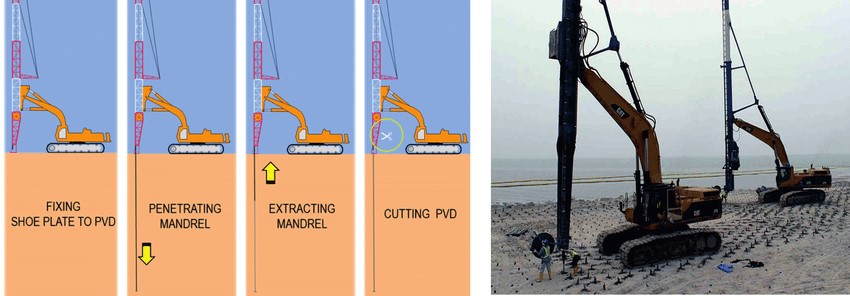
- The rig then moves to the next predetermined installation location and continues the process
- The installation details for each PVD are verified by the operator
- Once the PVD installation has been completed a new surcharge layer of loading is applied to the site
- Once the PVD has been driven to the correct depth and pressure the mandrel is then withdrawn back into the mast leaving the PVD in place
This surcharge layer combined with the PVDs accelerates the consolidation of the subsoils over a few months as opposed to over a few years. Correctly installed vertical drains/ wick drains significantly reduce the settlement time allowing the construction process a far more cost-effective, safer, and faster timeframe than traditional methods.
TECHNICAL DATASHEET FOR PVD W-90, PVD W-100 & PVD W-110
The range of BJ Geotextile wick drain is available in a choice of filter fabric and core to suit various soil conditions and engineering practices.
For details, please download our full technical datasheet.
The product specifications are as follows:
Composite Drain
Test Parameter |
Unit |
Test Method |
W-90 |
W-100 |
W-110 |
|---|---|---|---|---|---|
|
Mass per linear Meter
|
g
|
-
|
90
|
100
|
110
|
|
Thickness
|
mm
|
ASTM D5199
|
4.3
|
4.4
|
5.02
|
|
Width
|
mm
|
-
|
102
|
101
|
101
|
|
Tensile Strength
|
kN
|
ASTM D4595
|
2.4
|
2.7
|
2.67
|
|
Elongation at Break
|
%
|
ASTM D4595
|
41.08
|
41.50
|
56.12
|
|
Elongation at 0.5 kN
|
%
|
ASTM D4595
|
1
|
1
|
1.2
|
|
Strength at 10 Elongation at kN
|
KN
|
ASTM D4632
|
1.8
|
1.9
|
2
|
Core
Test Parameter |
Unit |
Test Method |
W-90 |
W-100 |
W-110 |
|---|---|---|---|---|---|
|
Thickness
|
mm
|
ASTM D5199
|
4.1
|
4.2
|
5.03
|
|
Tensile Strength
|
kN
|
ASTM D4595
|
1.6
|
1.9
|
1.69
|
|
UV Spectroscopy
|
nm
|
Internal Method
|
273(PP)
|
273(PP)
|
273(PP)
|
Filter
Test Parameter |
Unit |
Test Method |
W-90 |
W-100 |
W-110 |
|---|---|---|---|---|---|
|
Mass per unit area
|
g/m2
|
ASTM D5261
|
93
|
92
|
92
|
|
CBR Puncture Resistance
|
N
|
ASTM D6241
|
481.63
|
473
|
486.96
|
|
Tensile Strength
|
kN
|
ASTM D4595
|
4.26
|
4.26
|
4.26
|
|
Tensile Strength (Grab)
|
N
|
ASTM D4632
|
567.35
|
562.48
|
565.46
|
|
Trapezoidal Tear Strength
|
N
|
ASTM D4533
|
223.36
|
221.33
|
226.63
|
|
Water Permittivity (Normal to the plane)
|
s-1
|
ASTM D4491
|
0.29
|
0.29
|
0.28
|
|
Water Permeability (Normal to the Plane)
|
cm/s
|
ISO- 11058
|
0.013
|
0.013
|
0.013
|
|
*The Characteristic Opening Size O95
|
m
|
ASTM D4751
|
<86.63
|
<86.63
|
<86.63
|
|
UV Spectroscopy
|
nm
|
Internal Method
|
273(PP)
|
273(PP)
|
273(PP)
|

